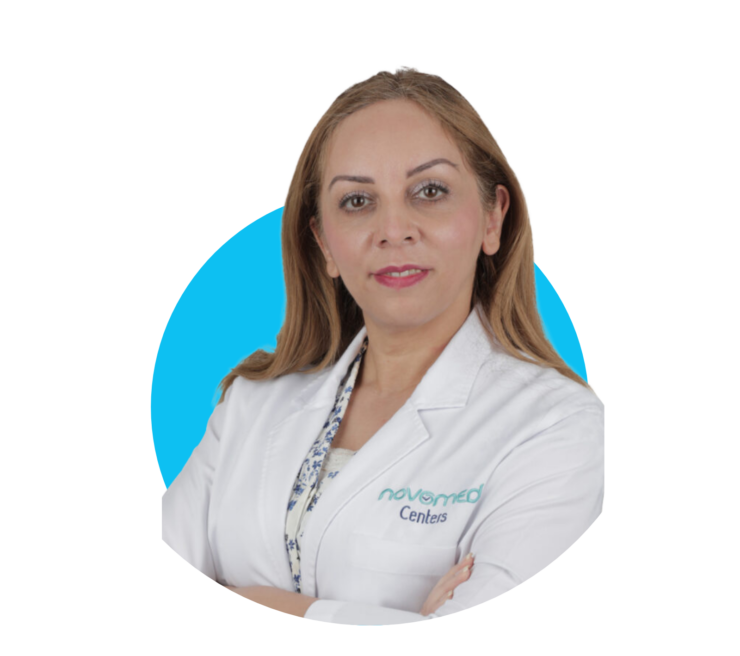Atherosclerosis Treatment in Dubai
Overview
Atherosclerosis is a condition characterized by the hardening and constriction of the arteries due to cholesterol plaque buildup. In this condition, your arteries can grow stiff and narrow, obstructing blood flow and lowering the delivery of oxygen-rich blood to the body’s tissues and essential organs.
Atherosclerosis develops gradually and may not cause symptoms until complications such as a heart attack or stroke occur. Early detection and treatment can help you avoid these complications.
What are the symptoms of atherosclerosis?
You may not experience symptoms until your artery becomes severely narrowed. Symptoms may differ depending on the affected artery.
Symptoms of atherosclerosis include:
- Chest pain or pressure and shortness of breath (if your heart arteries are affected)
- Numbness or weakness in the arms or legs and temporary vision loss (if the arteries leading to your brain are affected)
- Leg pain when walking (if the arteries of your arms and legs are affected)
- High blood pressure (if the arteries leading to your kidneys are affected)
What are the causes of atherosclerosis?
Although the specific cause of atherosclerosis is uncertain, it is thought to begin when the inner wall of an artery is damaged. Factors that may contribute to the damage include:
- High blood pressure
- High cholesterol
- High triglyceride
- Inflammation (such as that caused by arthritis or lupus)
- Obesity or diabetes
- Smoking
Once the inner wall is damaged, blood cells and other substances build up in the artery wall over time, forming plaque made of cholesterol and other cellular products. This plaque causes a hump inside your arterial wall, which can become a barrier if it grows large enough, restricting your arteries and preventing organs and tissues connected to these arteries from receiving enough blood to function properly. The plaques lining may tear, releasing cholesterol and other substances into the bloodstream; This can result in a blood clot, which can stop blood flow to a specific part of your body and spread to other body areas.
How is atherosclerosis diagnosed?
During your consultation, the cardiologist will review your medical and family history, perform a physical examination, and request various tests, including:
- Blood tests to check for factors that increase your risk of atherosclerosis, such as high cholesterol or blood sugar levels.
- Electrocardiogram (ECG or EKG) to monitor your heart’s electrical activity.
- Exercise stress test, in which your heart rate, blood pressure, and breathing are monitored while you exercise to identify heart problems.
- Echocardiogram, which uses sound waves to show how well blood flows through your arteries as your heart beats.
- Ankle-brachial index (ABI), a blood pressure comparison test for your ankle and arm, to determine if the arteries in your legs and feet have atherosclerosis.
- Cardiac catheterization and angiogram, during which the doctor inserts a catheter (thin tube) into a blood vessel into your heart and injects dye into the catheter to make the arteries visible on an X-ray and reveal if they are restricted or clogged.
- Imaging tests, such as magnetic resonance angiography (MRA) to examine your arteries and detect artery hardness or narrowing.
How is atherosclerosis treated?
Treatment options for atherosclerosis include:
– Lifestyle changes: Eating well, exercising regularly, and not smoking will help slow or stop atherosclerosis and reduce the risk of heart attacks and strokes.
– Medications: Various medications are available to help delay or reverse the effects of atherosclerosis, such as:
- Statins: can decrease cholesterol, improve the health of arteries, and prevent atherosclerosis.
- Blood thinners (such as aspirin): can lower the chance of platelets clumping in restricted arteries and forming a blood clot.
- Blood pressure medications: can prevent or cure complications associated with the condition by lowering blood pressure.
- The doctor may prescribe other medications to treat health problems that increase your risk of atherosclerosis (such as diabetes).
– Surgical procedures: Severe cases of atherosclerosis may require surgery. Surgical procedures performed to treat atherosclerosis include:
- Angiography and stenting to open a blocked or clogged artery. During this procedure, a catheter with a deflated balloon on its tip is inserted into the affected artery. The doctor then inflates the balloon, which widens the artery and, in some cases, leaves a stent in place to ensure it remains open.
- Endarterectomy: This procedure involves removing plaque from your neck arteries and restoring blood flow.
- Fibrinolytic therapy. If a blood clot is blocking an artery, the doctor may use a clot-dissolving medicine to break it apart.
- Coronary artery bypass surgery. The doctor uses a healthy blood vessel from another part of your body to create a bypass around the blocked artery, diverting blood flow.
How to prevent the risk of atherosclerosis?
To prevent atherosclerosis, you should stop smoking, consume nutritious foods, exercise regularly, and keep a healthy weight. You should also make sure to maintain healthy blood pressure, as well as healthy cholesterol and blood sugar levels.
Schedule your appointment at Novomed today!
To learn more on how to treat or prevent atherosclerosis, make an appointment with our expert cardiologist in Dubai by calling toll-free 8006686 or clicking the chat icon at the bottom of the screen.

